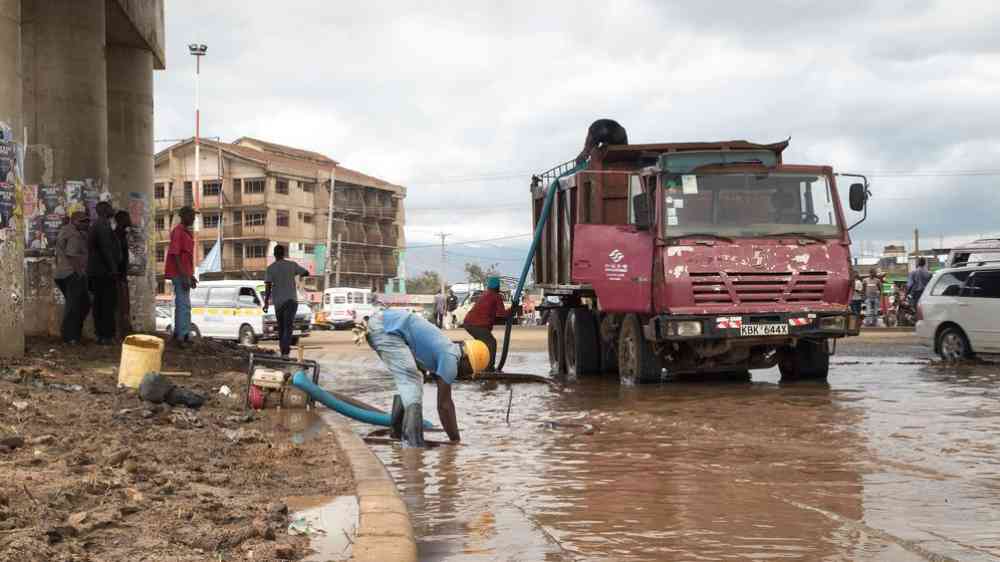Kenya floods prompt calls for warning systems

Kenya's worst flooding in decades highlights the urgent need for more robust mitigation efforts, including flood risk maps and early warning systems, say climate scientists.
Weeks of heavy rainfall and flooding across East Africa have triggered landslides, destroyed crops and infrastructure, and engulfed homes, leaving hundreds of thousands of people displaced across Burundi, Kenya, Rwanda, Somalia, Ethiopia and Tanzania.
In Kenya, at least 210 people have died in the floods, with many more injured or missing.
John Recha, a Nairobi-based climate scientist at the International Livestock Research Institute, said climate change and unsustainable human activity were driving the extreme weather events.
Early warning systems provide empowering information to climate change stakeholders for early action to save lives.
Guleid Artan, director, IGAD Climate Prediction and Applications Centre
"Climate change and variability are influencing weather patterns, precipitation levels, and the intensity of storms," he told SciDev.Net, adding that this results in frequent and severe flooding.
Recha said human activities such as deforestation, urbanization, and changes in land use can alter natural water flow patterns and increase the risk of flooding.
"Loss of vegetation cover can reduce soil absorption capacity and increase surface runoff during rainstorms," he told SciDev.Net.
Reducing flood risks
According to Recha, mitigating flooding in Kenya involves structural and non-structural measures aimed at reducing the risk of floods and their impacts on communities.
He said a multi-pronged response was needed, including better water management, flood risk maps, warning systems, and natural flood control using reforestation, as well as stronger infrastructure, community training and more robust government policies.
"[We need to] foster multi-sectoral collaboration and coordination among government agencies, civil society organisations, academia, and private sector stakeholders to address flood risk comprehensively, Recha said.
He pointed to the need to enforce and strengthen land-use regulations and building codes to prevent development in high-risk flood zones and promote resilient infrastructure.
Maasai Mara floods
On 1 May, scores of tourists were evacuated by air from Kenya's Maasai Mara National Reserve after more than a dozen hotels and camps were flooded by the heavy pounding rains.
The accommodation facilities were submerged after the Talek River in Maasai Mara, south-west Kenya broke its banks on Wednesday morning.
The Kenya Red Cross in collaboration with the National and county government of Narok, the Mara Elephant Project and community members, rescued more than 36 people by air and another 25 through an aqua rescue team.
Natural flood defences
In an address to the nation on 3 May, Kenyan President William Ruto stressed the need for nature-based flood mitigation.
"We must prioritise environmental conservation efforts and implement aggressive reforestation and wetland restoration programmes," he said.
"Scientific evidence indicates that restoring our natural habitats is our best defense against escalating weather extremes."
In late April, the Intergovernmental Authority on Development's Climate Prediction and Applications Centre (ICPAC) received funding from Google.org, Google's philanthropic arm, and the UN's World Food Programme for a project to strengthen early warning systems using artificial intelligence.
ICPAC director Guleid Artan told SciDev.Net:
The project aspires to revolutionise early warning systems in the IGAD region and enable communities to prepare and act pre-emptively against impending hazards.
Other partners involved include the University of Oxford, the Ethiopian Meteorological Institute, Kenya Meteorological Department, and the World Food Programme.
Artan told SciDev.Net that in the fight against climate change, early warning systems are crucial.
"Early warning systems provide empowering information to climate change stakeholders for early action to save lives," he said.
"It also helps in monitoring major hazards in regions prone to floods or drought to help responsible institutions stay informed in case of an imminent threat to a region."
Artan, however, stressed the importance of accurate data.
"The critical gap is accuracy and reach of early warning information, but most importantly taking early action is essential," he added.